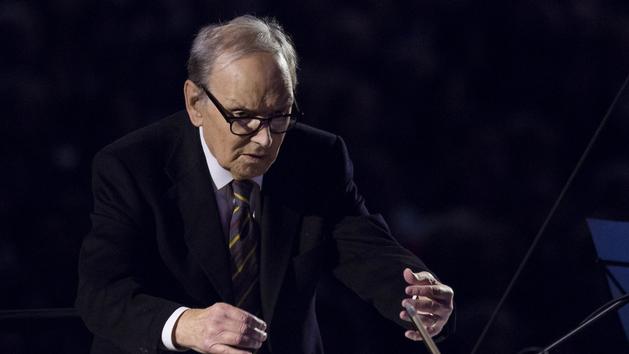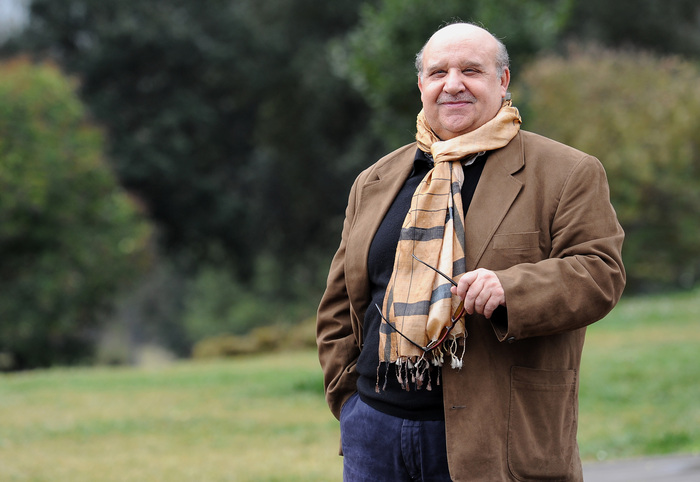His name is probably the first one that comes to mind when it comes to film music. A prolific composer, he has signed the soundtrack of more than 500 feature films during a 59-year career. His chivalrous epics for Sergio Leone and his agonizing melodies for Dario Argento and Mario Bava, among others, will have played a big role in the popularization of "western-spaghetti" and giallo. The Italian conductor Ennio Morricone died at the age of 91.
Read also: Ennio Morricone, "il Maestro"
Ennio Morricone was born on November 10, 1928 in Rome. His father Mario, jazz trumpeter, introduced him to several instruments and taught him music theory. At twelve, the young Ennio joined the Académie Sainte-Cécile in the city of seven hills. Supervised by the Italian composer Goffredo Petrassi, he left the conservatory in 1954 with three diplomas in his pocket: trumpet, composition and instrumentation, then conductor. Following in his father's footsteps, he plays in jazz groups, composes songs for the radio. In parallel, he also arranges the songs of pop and jazz artists. During the 1960s, he crossed paths with Helen Merrill, Jimmy Fontana, Mireille Mathieu, Françoise Hardy and Demis Roussos.
Western with Italian sauce
His work for the radio gradually takes him to the cinema. Morricone becomes “ghostwriter” (musical negro) for film music composers. It was not until 1961 that Luciano Salce gave him a chance. "Il Maestro" signs his first film score in Mission ultra-secrète , a comedy by the Italian filmmaker. Then, three years later, when he was only around thirty, began the turning point of his career. Sergio Leone, a former childhood friend, offers him to compose the music for his first western: For a handful of dollars . The feature film, reinterpretation of the Hollywood western with an Italian flavor, met with success. And the carnivalesque soundtrack of Morricone is not for nothing.
Read also: Sergio Leone on all fronts at the Cinémathèque française
In the process, he composed a new musical epic for his compatriot. In For a few dollars more (1965), the maestro supports a style that will make the heyday of the “spaghetti western”, made in Italy : electric guitars, whistling, whistles, recorder and trumpets intermingle in a grand opera. A formula that he will take up in Le Bon, la Brute et le Truand (1966), the cornerstone of Leone's work, which will close the “Dollar Trilogy”.
Sergio Corbucci, another big name in the spaghetti western, called on him to compose the music for Navajo Joe (1966) and Le grand silence (1968). The name of Morricone becomes known throughout the world, as well as the sequences of the films, magnified by the music of the Maestro: one thinks in particular of the unbearable tension of the Mexican stand-off between Clint Eastwood, Lee Van Cliff and Eli Wallach in the final scene of the Good, the Bad and the Ugly or the duel between the man on the harmonica interpreted by Charles Bronson and the ignoble Frank (Henri Fonda) in Once upon a time in the West ...
From the Wild West to giallo
Besides this last classic of the genre, Morricone will produce two other soundtracks for Leone: Once upon a time there was the revolution (1971) and Once upon a time in America (1984). Six collaborations in total. Enough to install the myth and sit the Morricone-Leone duo at the Pantheon of the seventh art. When Le Figaromet him in 2014, the composer preferred to highlight his work with his compatriots Guiseppe Tornatore, Mauro Bolognini or Giuliano Montaldo.
Read also: Ennio Morricone regrets not having composed for Clint Eastwood
The maestro also collaborated with the major directors of transalpine cinema. From drama to comedy via giallo and Italian neorealism, he composed for Pier Paolo Pasolini, Vittorio De Sica, Bernardo Bertolucci, Mario Bava and Dario Argento. For "the master of horror", he composed the music for L'oiseau au plumage de Cristal (1970), The cat with nine tails and Four gray velvet flies (1971) in the early 1970s. His style, always melancholic, breaks with the epic opera of the Leone period. At Argento, the sound of Morricone freezes the blood and distills the chills of anxiety.
His first foray abroad, he made alongside Toshiro Mayuzumi in John Huston's Bible (1964), but will not be credited. Then come Henri Verneuil's Le Clan des Siciliens , five years later. Add to the list Terrence Malick, Samuel Fuller, Brian De Palma, Pedro Almodovar, Roman Polanski or Quentin Tarantino, to name a few. It is the latter who will make him win his first Oscar ... at 87 for his work on Les Huits Salopards - he had won a statuette of honor saluting his entire career a few years earlier.
Read also: Morricone denies calling Tarantino a "moron" during an interview in Playboy
In total, Morricone will have composed the music for more than 500 films. He himself did not really know how much. Among them, film classics: The Battle of Algiers (1966), La Chose (1982), Mission (1986), Les Incorruptibles (1987), Cinema Paradiso (1988) ... It will have touched all genres, he who boasted of having studied all styles of compositions at the conservatory. “The fact that I was able to compose music freely, and in such a different way, was made possible not only because I could count on technology, but also because it was essential that I change my style to each composition. Each film required it, "he told Le Figaro before one of his gigantic Roman concerts in 2017.
Concerto and Catholic Church
Ennio Morricone was also a man of character, capable of insulting Tarantino in an interview before retracting or demanding that he be addressed by calling him exclusively "Maestro" in an interview. In recent years, Morricone had turned away from cinema for concerts revisiting his work. The opportunity to discover his less known projects. Like his participation in the Gruppo di Improvvisazione Nuova Consonanza, collective of avant-garde musicians of which he was a member between 1966 and 1980 with Egisto Macchi and Franco Evangelisti. Or the classic pieces he has composed since 1946.
Among his key works outside the cinema, we note Le Concerto per Orchestra n.1 (1957), Cantata per L'Europa (1988) or Vuoto d'anima piena (2008). He led a mass composed for Pope Francis in June 2015, commissioned by the Society of Jesus to celebrate the 200th anniversary of the restoration of order at the Jesuit Church in Rome.
»Follow all the news from Figaro culture on Facebook and Twitter .















